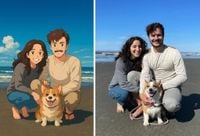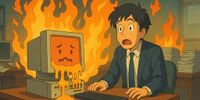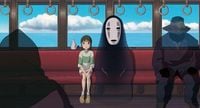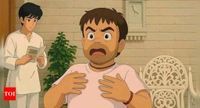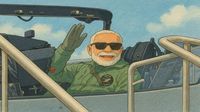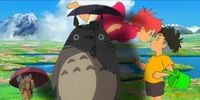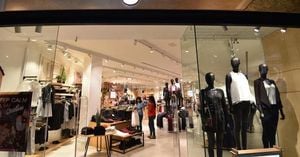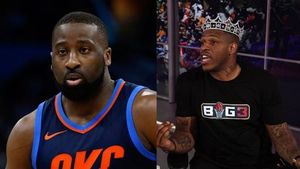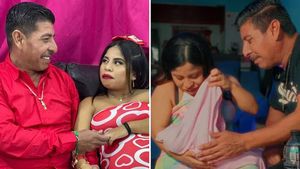OpenAI's latest image generation feature has taken social media by storm, leading to an overwhelming demand that has left the company's infrastructure struggling to keep up. The new tool, integrated into the GPT-4o model, allows users to transform text prompts and existing photos into stunning artwork, with a particular focus on the beloved Studio Ghibli style. This has resulted in a viral trend dubbed "Ghibligeddon," where users have been creating anime-inspired portraits reminiscent of films like "Spirited Away" and "My Neighbor Totoro." As excitement surged, OpenAI CEO Sam Altman took to social media to express his concerns about the unprecedented demand, stating, "Can y'all please chill on generating images? This is insane; our team needs sleep," on March 30, 2025.
The phenomenon began shortly after the launch of the image generator, which utilizes an autoregressive approach to create images pixel by pixel. This method differs from traditional image generators that rely on diffusion models, requiring significantly more computing power. As a result, OpenAI's GPUs have been pushed to their limits, leading to the implementation of emergency measures such as rate limits on image generation. Users are now restricted to three generations per hour in some areas, while free users will only be allowed to create three images per day when the feature is fully rolled out.
Despite the limitations, the demand for Ghibli-style images has driven over one million new sign-ups for ChatGPT in just one hour on March 31, 2025. The term "ChatGPT" even overtook "Google" in Google Trends shortly after the release of the new model. The excitement surrounding the Ghibli-style portraits has not only captivated individual users but also caught the attention of brands and even the White House, which published a Ghibli-style meme in a controversial context.
However, the rise of AI-generated art has sparked significant debate within the creative community, particularly among artists and animators. Many fear that the proliferation of AI tools could erode the value of traditional art forms. Recently, GKids, the North American distributor for Studio Ghibli films, issued a statement that many interpret as a subtle critique of AI-generated art. Chance Huskey, VP of distribution for GKids, expressed, "In a time when technology tries to replicate humanity, we are thrilled that audiences value a theatrical experience that respects and celebrates Hayao Miyazaki and Studio Ghibli’s masterpiece in all its cinematic hand-drawn glory." This statement coincided with the release of a 4K restoration of "Princess Mononoke," which earned $1.2 million in previews.
Hayao Miyazaki himself has been a vocal critic of AI in animation, famously stating in 2016 that he is "deeply disgusted" by the technology, calling it "an insult to life itself." His concerns reflect a broader anxiety among artists regarding the implications of AI-generated content, which many argue undermines the painstaking efforts of illustrators who spend years honing their craft.
The surge in AI-generated content has raised questions about copyright and the potential for legal action. Robert Rosenberg, founder of Telluride Legal Strategies, suggested that Studio Ghibli could pursue legal action against OpenAI for violating the Lanham Act, which governs trademark law. He explained that Ghibli could argue that OpenAI's tool exploits the studio's reputation by creating confusion among consumers regarding the authenticity of the generated images. Additionally, there are concerns about whether OpenAI's training of its models on copyrighted works could lead to further legal challenges.
As the debate continues, digital privacy activists have also raised alarms about the implications of sharing personal images with AI tools. Proton, a privacy advocacy platform, cautioned that users may lose control over their photos once uploaded, as these images could be used to train AI and potentially sold to third parties. Experts warn that uploading personal images carries risks, including the exposure of sensitive data and the potential for misuse.
Despite these concerns, the Ghibli portrait trend has transformed the way people engage with art and creativity, making it more accessible to a wider audience. The simplicity of the ChatGPT tool allows anyone, regardless of artistic skill, to create their own Ghibli-inspired artwork. This accessibility has led to a wave of creativity, with brands like Zomato and Swiggy using Ghibli-style images in their advertising.
In the midst of this excitement, the environmental impact of such high-demand AI tools cannot be overlooked. The GPT-4o model consumes twelve times more energy than its predecessor, raising concerns about sustainability in the face of increasing user demand.
As OpenAI works to strengthen its infrastructure and address these challenges, users may need to wait their turn to access the full capabilities of the image generator. The company has not provided a timeline for when full capacity will be restored, stating only that they are optimizing their systems and hope it won't take long.
In conclusion, the Ghibli-style image generation trend has opened new avenues for creativity while simultaneously igniting discussions about the future of art, copyright, and digital privacy. As technology continues to evolve, the balance between innovation and respect for traditional artistry remains a critical conversation for creators and consumers alike.
